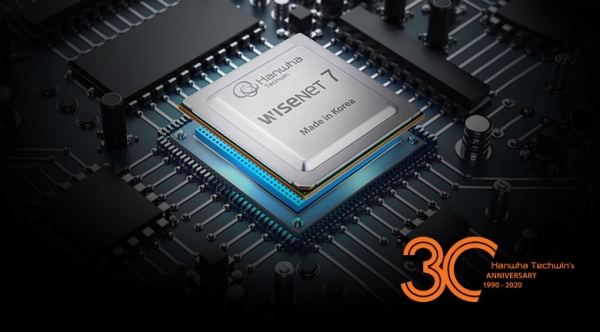
Hanwha Techwin has started development of 8-nanometer (nm) system-on-a-chip (SoC) for CCTVs this year, TheElec has learned.
The company is aiming to reduce reliance on China’s HiSilicon, which has previously supplied the CCTV chips.
Hanwha is using South Korean design house company for the design. Samsung Foundry will be manufacturing the chips.
The chips will begin to be manufactured in the next three years.
Back in 2013, Hanwha developed its own CCTV chip called Wisenet. In 2017, it also developed a 14nm chip called Wisenet 7. The company used Alpha Holdings as the design house and Samsung Foundry for the production for Wisenet 7, which went into production in March last year.
CCTVs that use Wisenet 7 were supplied to customers in the US and Europe, starting in August last year. The chip has AI-based object detection technology.
CCTVs generally use internet protocol SoC. It integrates video processing, compression, telecommunication and encryption into one chip for the CCTV.
HiSilicon held over 90% shares in CCTV semiconductors. However, the company, which is a subsidiary of Huawei, can no longer supply its chips to customers due to US sanctions that went into affect on September last year.
The US accounts for over 30% of Hanwha’s sales __ the reason why it is focusing on developing its own chip, while reducing reliance on HiSilicon.
Alternatives to HiSilicon include Qualcomm, Intel, Ambarella and Novatek. But their chips are pricier and more difficult to optimize compared to HiSilicon’s, a person familiar with the matter said. Changing the chip used in CCTV requires the change of other components as well, which burdens cost, they said. More CCTV companies are developing their own chips due to this, they added.
South Korea fabless companies are also hoping to expand into CCTV chips due to this trend. Local fabless companies that develop CCTV chips include Pixelplus and Eyenix. According to IMS Research, the market for intelligent CCTV was worth 35 trillion won last year, around double that of 18.9 trillion won in 2013.

